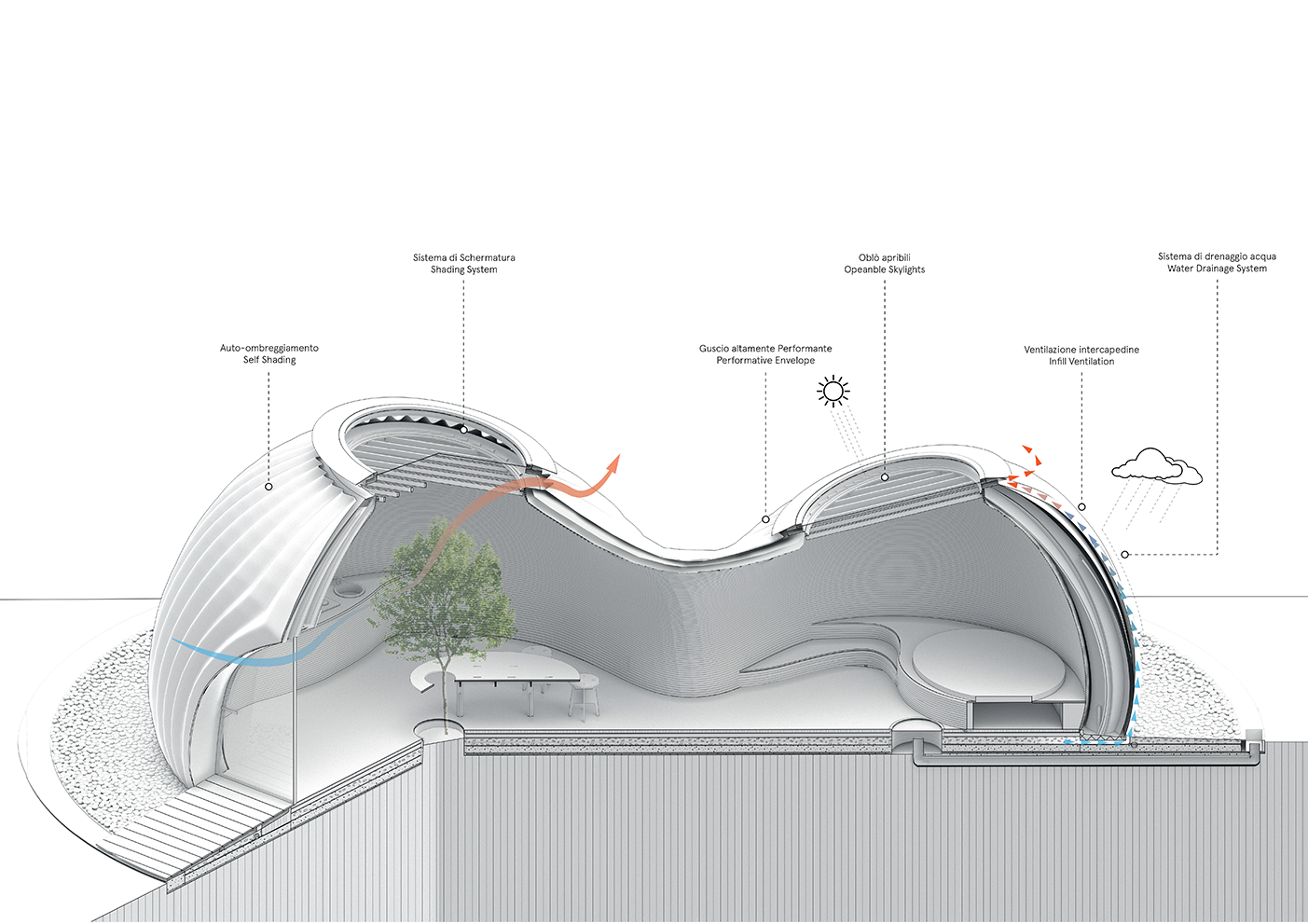Una delle principali innovazioni messe a disposizione dalla tecnologia di stampa 3D rispetto alle tecniche di costruzione tradizionali è certamente l’estrema flessibilità della forma. La parametrizzazione, infatti, permette di ottenere forme complesse e variabili fino ad ora impensabili. Questa libertà, tuttavia, non si limita a consentire la realizzazione di nuove forme ma può avere importanti ripercussioni anche sulle performance dell’edificio, in particolare su quelle dell’involucro edilizio. Involucro che è in grado, sulla base di alcuni parametri geometrici prestabiliti, di cambiare parametricamente in base al dato climatico, dando vita, di volta in volta, alla configurazione più performante rispetto al luogo per cui è pensato.
Tre sono i parametri presi in considerazione per l’ottimizzazione dell’infill di TECLA: la ventilazione e l’ombreggiamento (affidata allo strato più esterno), l’isolamento (ottenuto grazie al riempimento delle cavità intermedie con lolla di[...] riso, prodotto di scarto della lavorazione del cereale) e la massa termica (che aumenta all’aumentare delle “nervature” di terra dell’infill).
Ogni tipo di clima troverà in queste infinite combinazioni una configurazione ottimale, determinata dalla massimizzazione/minimizzazione di alcune caratteristiche rispetto alle altre. Così a un clima molto umido, per cui la massa termica – capace di immagazzinare umidità indesiderata – risulta un aspetto critico, corrisponderanno sinusoidi molto dilatate e uno strato ventilante molto ampio. Allo stesso modo in un clima rigido l’isolamento diventerà preponderante rispetto agli altri strati, limitando gli apporti della ventilazione che mettono in contatto l’involucro con l’aria fredda esterna. Il risultato, che è riassunto nell’immagine della matrice di ottimizzazione, è un infill capace di adattarsi al contesto ambientale e garantire i massimi livelli di comfort interno pur partendo da materiali locali e da una grande semplicità di concezione.
























.jpg)
.jpg)
-739.jpg)

_Thumbnail.png)

-756.jpg)